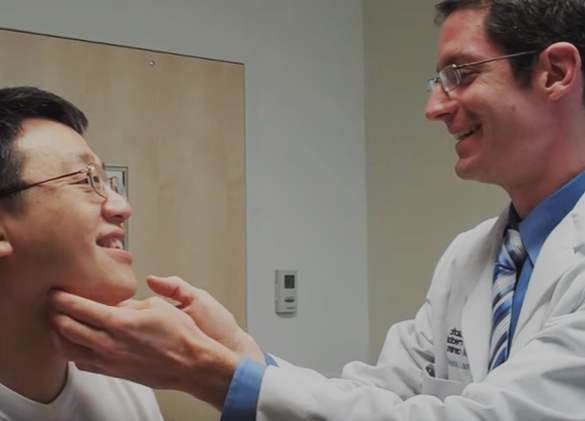Watch a video that shows how the fat is harvested and processed during facial fat transfer.
I just uploaded a new video to my YouTube channel that shows the process of fat graft harvesting via hand vacuum-generated liposuction followed by fat centrifuging and processing. You can learn more about facial fat transfer here. Check out the new video below:
Video transcript:
"This is Seattle facial plastic surgeon, Dr. Thomas Lamperti. Today I'm going to show you how we harvest, centrifuge, and process the fat for facial fat transfer. You can see how by hand I am liposuctioning this patient's lower abdomen. The idea is to use a very minimal amount of vacuum or suction in order not to damage the fat cells. In this case we harvested four syringes worth of fat that we're now putting in the centrifuge. The idea is to separate the fat cells that we want from the blood, lidocaine and fatty oils that would otherwise hinder fat graft take. I centrifuge the fat for 3 minutes at 3000 rpm. While that is occurring we put steri-strips over the harvest site in the belly button.
Once the fat has been processed you can see how it has been separated into the fat in the middle, the oils in the top and blood at the bottom. We pour out the oils which are basically from the ruptured fat cells -- a minimal amount of oil is a good sign. Then the blood from the bottom easily is drained. And then we transfer all of the fat that has been isolated into one syringe. You can see how we have little cotton pledgets that help us wick any residual oil. As it turns out, oil is detrimental to fat graft -- they don't really like that and it hinders fat graft take. The last step before performing the fat grafting itself is to transfer the fat into individual 1 cc syringes. These smaller syringes make it much easier to place the fat into the face in a very guided and direct fashion. The very small aliquots of fat that are placed -- these very small droplets -- are more easily done with a smaller syringes since less pressure is needed.
The amount of fat that is needed for any individual case is customized. So if only a small amount or one area is going to be treated a smaller amount of fat would then be harvested. Most people are very happy to donate extra fat just in case and so I do err on over harvest just to make sure that I have enough fat. There is a variable amount of fat graft processing yields and usually it is about 50 percent."


